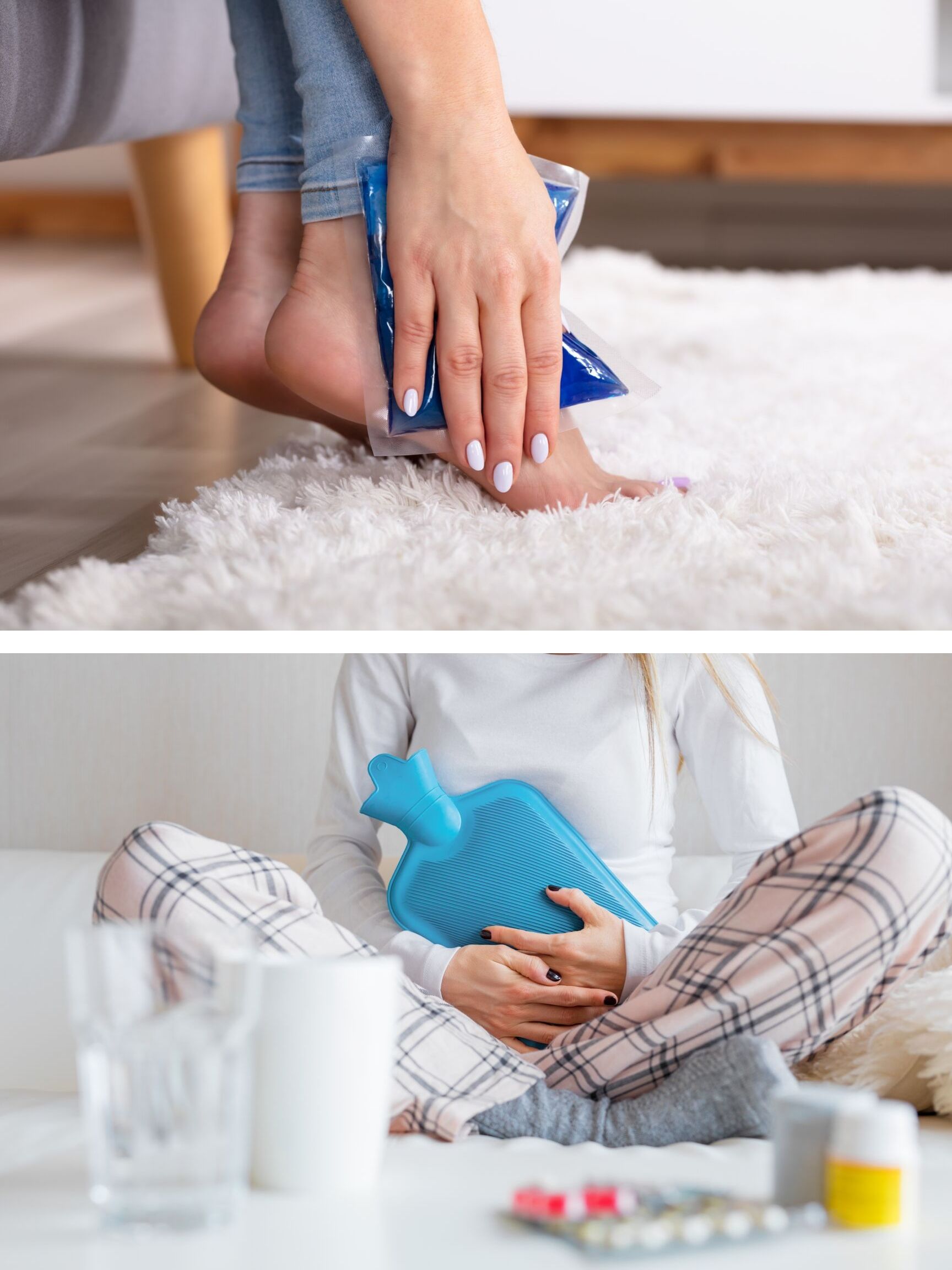
Hot and cold therapy
Both hot and cold therapy can be useful when addressing symptoms of pain, but people are often confused about which to choose. Typically, each has specific uses, as well as contraindications. Therefore, it is helpful to understand the application of each, and under which circumstances you would choose one over the other. Another important piece to this query is whether either of them yields the desired outcome.
What is heat therapy?
Heat therapy works by improving circulation and blood flow to a particular area due to increased temperature and its vasodilatory effects. Increasing the temperature of the afflicted area can sometimes temporarily soothe discomfort and increase muscle flexibility.
Heat therapy should not be used if the area in question is in an acute state of recovery, generally indicated by swelling, redness, pain and inflammation because heat can exacerbate these symptoms by the increase in blood flow. In these cases, it may be better to use cold therapy. Heat therapy should also not be used on an open wound, or in any person whose condition may result in a lack of sensory perception (diabetes, vascular diseases, etc).
What is cryotherapy (cold therapy)?
Cold therapy is also known as cryotherapy, which has become very popular in studios such as Goat Climb & Cryo, a partner of Delos Therapy. It works by reducing blood flow to a particular area, which can significantly reduce inflammation and swelling that causes pain. Frequently, this type of therapy has been made recommended with joint pain and conditions such as arthritis. It can also temporarily reduce nerve activity, which may provide some symptomatic relief.
Caution should be used in the consideration of cold therapy when there are disorders that prevent the accurate assessment of sensation, such as diabetes, which oftentimes results in nerve damage and lessened sensitivity.
Does heat therapy or cryotherapy work?
Although both of these treatments provided some temporary relief, it is crucial to see that they treat the symptoms, not the underlying cause of the pain. Yes, stiffness and immobility can cause pain. Yes, inflammation can cause pain. The more important question is this – what is it that’s causing the stiffness, inflammation or swelling? When, over time and with repetitive use, muscles and connective tissues become congested and hardened, they lose their ability to fully relax out of a contracted state. When muscles are chronically contracted, they are hard and immobile, which can result in any number of symptoms: pain, immobility, weakness, lack of circulation, lack of sensation. In utilizing this lens when addressing these issues, pain can be resolved on a larger scale.
At Delos Therapy, what we’re doing is treating the root cause of these symptoms. We’re directing our attention at the tight tissues and applying a very precise and direct physical stretch into them. This is not to be confused with conventional stretching, which is a one-dimensional approach that can be likened to stretching a rubber band with a knot in the middle and trying to get rid of the knot. You may be stretching the healthy fibers around that knot, you’re just not doing anything for the tissues that have become bundled, and are now unable to stretch on their own.
By using our innovative therapy, Delos is breaking down the fibers that have become bundled, creating length in them, and restoring pliability. The restoration of pliability is what can provide long-term relief and get muscles functioning again in a way that results in a feeling of freedom and empowerment.
- Alleviating Menstrual Pain With Delos Therapy - May 4, 2020
- Delos Therapy – Hot and Cold Therapy - October 21, 2019
- Therapy Spotlight: What Is Myofascial Release? - September 24, 2019


